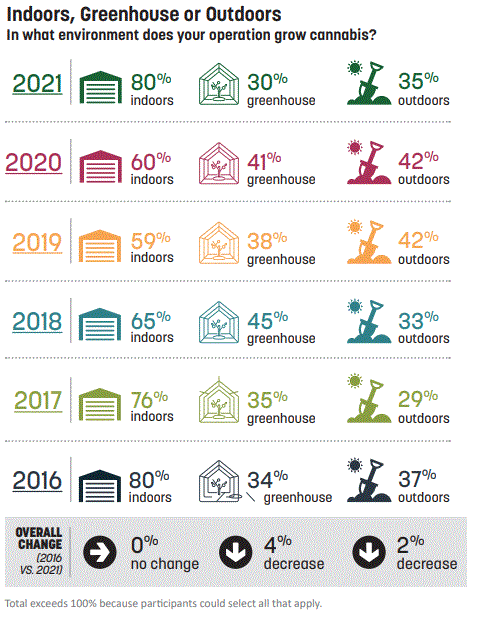With the rapid growth of new indoor agriculture facilities growing vegetables, cannabis and other plants, the increased demand for energy and carbon intensive lighting and dehumidification for plant growth has skyrocketed. Lighting can consume between 50-70% of an indoor grow facility’s energy. HVAC and dehumidification accounts for most of the rest. For cities and states trying to meet climate action targets to reduce emissions, the data tells us that unless states can incentivize the growth of crops outdoors or in greenhouses it is necessary to enact standardized requirements for indoor horticultural facilities as soon as possible.

The current development of the 2024 International Energy Conservation Code (IECC) is the best near-term opportunity to capture these savings in future growing facilities. Last month, the first of two proposals submitted by NBI in October 2021 was approved by the commercial consensus committee, and will be included in the first draft of the new energy code to be released for public comment this summer. The committee-approved proposal (CEPI-185) addresses lighting efficiency with the second proposal (CEPI-84) targeting dehumidification efficiency to be considered in the coming weeks. Taken together, these requirements could drastically reduce the energy and carbon footprint of these facilities. According to one study, if all horticultural lighting today was converted to LED technology, they would achieve a lighting energy savings of 34% and save $350 million annually.
Why addressing indoor grow facilities is critical
Trends show that between the widespread legalization of medical and recreational marijuana and the country’s increasing appetite for year-round local produce, the square footage of indoor horticulture facilities could double in four years, according to a 2021 report from KD Market Insights. For cannabis alone, 80% of U.S. product is grown indoors—up 20% from the previous year, says the Cannabis Business Times 2021 “State of Cannabis Cultivation Industry Report.” Yet the industry has been slow to adopt the technology due to the cost of LEDs, as well as concerns about the effectiveness of efficiency measures in terms of product yield and quality.
Much work has already been done at the state level to address energy consumption of indoor horticultural facilities. NBI introduced the first lighting efficiency requirements for horticultural facilities adopted in Seattle in 2015. Since then, Massachusetts, Illinois, California and the city of Denver have all adopted more stringent lighting rules, including those covering marijuana facilities, into their building codes. Because of NBI’s work, Minnesota, Washington, DC, and Washington state commercial energy codes are considering adopting similar requirements.
While this progress is encouraging, NBI has been working to establish better national model energy code stringency that would impact indoor horticulture across the U.S. for significant energy savings and carbon mitigation. In addition to the current proposals working their way through the 2024 IECC process, NBI staff was also involved in incorporating energy efficiency requirements for greenhouses and indoor agriculture facilities into the ANSI/ASHRAE/IES Standard 90.1. Comments from the first public review draft, Addendum ar, closed November 2021 and a new version that addresses public comments will be released soon.
To learn more about how NBI is working to make the IECC a hero in the climate fight, visit newbuildingsin.wpenginepowered.com/code_policy/2024-iecc-national-model-energy-code-base-codes.
by Diana Burk, Project Manager
Bio
Did you enjoy this content? Consider supporting NBI’s work with a donation today.
